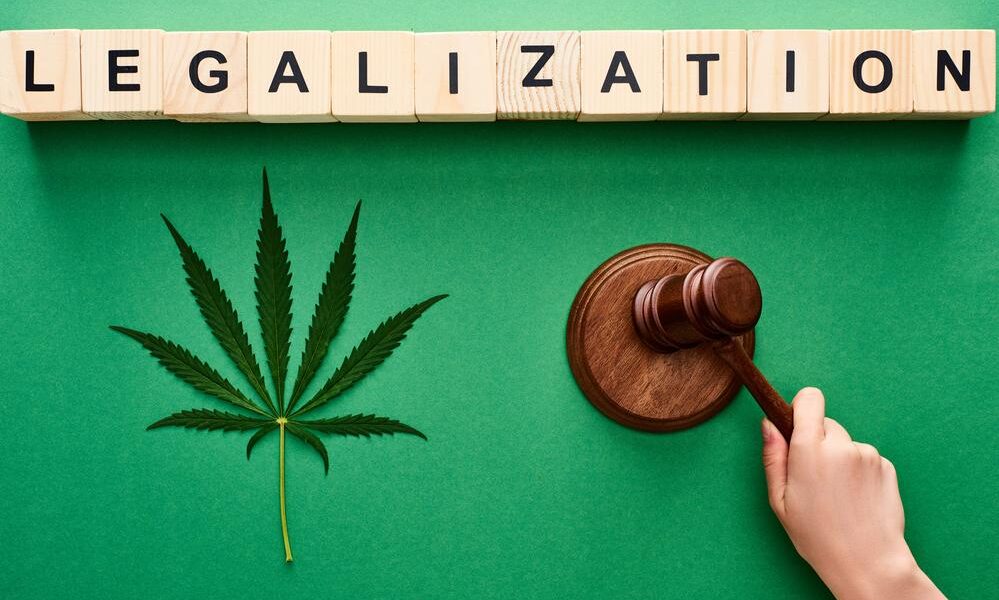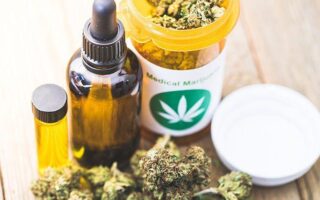In the crowded halls of public debate, few topics ignite passion and division quite like the legalization of drugs. As societies grapple with complex issues surrounding addiction, criminal justice, and public health, the dialogue often sways from one extreme to the other—some heralding legalization as a pathway to freedom and reform, while others warn of the potential dangers lurking beneath a seemingly liberal façade. This article embarks on an exploration of the multifaceted arguments surrounding drug legalization, weighing its potential benefits against the challenges it may pose. By delving into the perspectives of advocates and opponents alike, we aim to illuminate the intricate tapestry of implications that come with rethinking drug policy, inviting readers to engage thoughtfully with a topic that sits at the crossroads of morality, health, and societal progress.
Table of Contents
- Exploring the Economic Impacts of Drug Legalization
- Examining Public Health Considerations in Drug Policy Reform
- Assessing Social Justice and Equity in Legalizing Drugs
- Understanding Regulation and Control in a Legalized Drug Market
- Q&A
- To Conclude
Exploring the Economic Impacts of Drug Legalization
The economic ramifications of drug legalization are multifaceted, offering both potential benefits and significant costs. Proponents argue that legalization can stimulate the economy by creating a new market that generates tax revenue. Revenue from taxes on legalized drugs could be redirected towards public services such as education, healthcare, and addiction treatment. Furthermore, job creation in sectors such as retail and agriculture related to legalized substances can decrease unemployment rates, fostering economic growth. However, critics contend that the costs associated with increased healthcare needs, law enforcement adjustments, and social services could outweigh these benefits.
To illustrate this, consider the following comparative table of projected outcomes in a legalized drug market:
| Impact | Potential Positive Outcomes | Potential Negative Outcomes |
|---|---|---|
| Tax Revenue | Increased funding for public services | Possible misallocation of funds |
| Employment | New job opportunities in various sectors | Job losses in law enforcement |
| Healthcare Costs | Improved access to health services for users | Rise in addiction treatment demands |
while the prospect of economic benefits is enticing, the reality of increased costs presents a complex challenge. A balanced approach must carefully weigh the potential rewards against the inherent risks associated with altering drug policy.
Examining Public Health Considerations in Drug Policy Reform
As the debate surrounding drug legalization continues, public health considerations emerge as a pivotal element influencing policy outcomes. Advocates for legalization often argue that such measures can lead to better health outcomes by promoting regulated access and reducing the stigma attached to users. By moving substances into a controlled environment, users might benefit from safer consumption practices, education about usage, and ultimately a reduction in drug-related harms, such as overdoses and the spread of infectious diseases. This shift can also redirect law enforcement resources towards addressing more pressing public health issues rather than penalizing individual users.
On the contrary, opponents raise concerns that the legalization of drugs could potentially lead to increased usage rates, particularly among vulnerable populations, including adolescents and those with predispositions to addiction. There is a fear that making drugs more accessible may normalize their use, complicating prevention efforts and possibly leading to a significant public health burden. Additionally, the societal ramifications of legalization, such as increased healthcare costs for addiction treatment and the potential for impaired social behaviors, must be carefully evaluated. Weighing these factors calls for a nuanced approach that considers not only the legal implications but also the comprehensive health and societal impacts of drug policy reform.
Assessing Social Justice and Equity in Legalizing Drugs
The legalization of drugs presents a pivotal opportunity to reassess social justice and equity within the realm of substance use. By shifting away from criminalization, societies can make strides towards addressing the disproportionate impact that drug laws have on marginalized communities. For instance, removing criminal penalties can lead to a reduction in incarceration rates for minorities, who historically face harsher sentences for drug-related offenses. Additionally, the regulation of drugs may create an environment where resources can be diverted from law enforcement to education and health services, fostering a more equitable distribution of aid. Key considerations include:
- Reducing inequities in the criminal justice system
- Providing better access to healthcare and rehabilitation services
- Encouraging community-led initiatives for drug education
- Generating tax revenues that can be funneled into social programs
On the flip side, the implications of legalizing drugs also bring forth concerns regarding equity, particularly in terms of commercialization and access. If drug markets shift towards privatization and profit-driven motives, there is a risk that marginalized communities could be excluded from the economic benefits of legalization. Issues of corporate monopolization and exploitation can arise, leading to inequalities in who controls the distribution and sales of legalized substances. This could exacerbate existing disparities, especially if regulatory frameworks do not prioritize local businesses or small-scale producers. To visualize this balance, consider the following table:
| Potential Benefits | Potential Risks |
|---|---|
| Decreased incarceration rates | Corporate monopolization |
| Increased public health funding | Limited community access to profits |
| Enhanced drug education programs | Marginalization of small producers |
Understanding Regulation and Control in a Legalized Drug Market
In a legalized drug market, regulation becomes essential to ensure safety and control over the quality of substances. By implementing a structured framework, governments can establish standards for production, distribution, and sale, which can minimize the presence of harmful adulterants. This approach opens avenues for tax revenues that can be invested back into public health initiatives, education, and addiction treatment programs. Some of the core components of effective regulation might include:
- Strict Quality Control: Ensuring that products meet public health standards.
- Age Restrictions: Limiting access to certain age groups to prevent underage use.
- Clear Labeling: Providing users with detailed information on ingredients and effects.
Nevertheless, the path to a regulated market is fraught with challenges. Critics argue that regulation could inadvertently normalize drug use, complicating efforts to combat addiction. Additionally, the black market may persist; if regulated prices are too high, consumers might still seek cheaper options illegally. Policymakers must grapple with various concerns, balancing public health interests against the freedoms of individual choice. Some potential drawbacks include:
- Increased Accessibility: Potential rise in consumption rates among vulnerable populations.
- Resource Allocation: State resources might be diverted from other critical areas.
- Enforcement Issues: Ensuring compliance with regulations can be complex and costly.
Q&A
Q&A: Pros and Cons of Legalizing Drugs
Q1: What are the primary arguments in favor of legalizing drugs?
A1: Advocates for drug legalization often highlight several key benefits. Firstly, it could lead to substantial tax revenues, similar to those from alcohol and tobacco. These funds could be directed towards public health initiatives, education, and rehabilitation programs. Additionally, legalization may reduce the burden on the criminal justice system, allowing law enforcement to focus resources on more serious crimes. Furthermore, regulated markets can lead to safer products, reducing the risks of overdose and contamination associated with illegal drugs.
Q2: What are the main concerns raised by opponents of drug legalization?
A2: Detractors argue that legalizing drugs could exacerbate public health issues and increase substance abuse. They worry that easier access might lead to higher rates of addiction and related social problems. Opponents also express concern about the potential normalization of drug use, arguing that younger populations may be more likely to experiment with these substances. Additionally, there’s the apprehension that systemic issues, such as mental health disorders, may not be adequately addressed in a legalized framework.
Q3: How does the legalization of drugs affect crime rates?
A3: The impact of drug legalization on crime rates is complex and varies by location and the specific substances involved. Proponents suggest that reducing the illegal drug market can lead to decreased drug-related violence and crime. On the other hand, some fear that legalization might give rise to new crime avenues, such as trafficking of legal substances to minors or illicit markets for potentially unregulated products. Ultimately, the outcome may depend on how well the legal framework is implemented and enforced.
Q4: In what ways could drug legalization influence public health?
A4: Legalizing drugs could lead to improved public health outcomes if approached with comprehensive strategies. Regulated access may facilitate harm-reduction services, such as supervised consumption sites and access to clean needles, which can diminish the spread of infectious diseases. Education campaigns about drug use and addiction could also become more prominent, promoting safer consumption practices. However, if inadequate support systems are established, it could hinder these potential benefits, prompting an increase in healthcare costs associated with addiction and abuse.
Q5: What lessons can be learned from places that have already legalized drugs?
A5: Observations from regions that have legalized drugs, such as Colorado for cannabis, reveal a mixed bag of outcomes. These areas typically see increased tax revenue and some public health programs prospering, but they also face challenges such as heightened consumption rates and the need for ongoing education and prevention initiatives. Success often hinges on how thoroughly regulators implement measures to safeguard against misuse and ensure community health. Each experience serves as a vital case study for understanding the potential ramifications of drug legalization.
Q6: How can policymakers approach drug legalization thoughtfully?
A6: Policymakers should engage in a balanced, evidence-based dialogue that incorporates input from health professionals, law enforcement, community organizations, and substance users themselves. Implementing gradual, pilot programs can help assess the effects on communities before widespread legalization. Comprehensive regulations must also prioritize public education, treatment accessibility, and harm reduction strategies while continuously monitoring outcomes to adapt policies as necessary. Thoughtful approaches can pave the way for more informed, effective drug policies that prioritize both safety and individual freedoms.
Through this exploration of the multifaceted debate surrounding drug legalization, it becomes clear that both sides offer valid concerns and potential solutions, highlighting the need for a careful, nuanced approach to this pivotal issue.
To Conclude
In the intricate tapestry of society’s relationship with drugs, legalizing their use presents both a compelling allure and a daunting challenge. As we’ve traversed the landscape of this controversial topic, we have unearthed arguments that echo the voices of advocates seeking reform, as well as the cautionary tales echoed by those who fear the consequences of unbridled access.
The debate is rich and multifaceted, reflecting a spectrum of values, beliefs, and experiences. With the potential for medical innovation and economic benefits standing shoulder to shoulder with the risks of addiction and societal upheaval, the path forward remains both tantalizing and treacherous.
As we ponder the implications of legalizing drugs, we’re reminded that the answers are rarely black and white. Each perspective offers valuable insights, and the future will depend on a careful balance of compassion, evidence-based policy, and public health considerations. The discourse continues, inviting us to engage, educate, and explore the complexities of our choices. Ultimately, the conversation does not end here; rather, it serves as a launchpad for deeper understanding and informed action in the quest for a safe and equitable society.



